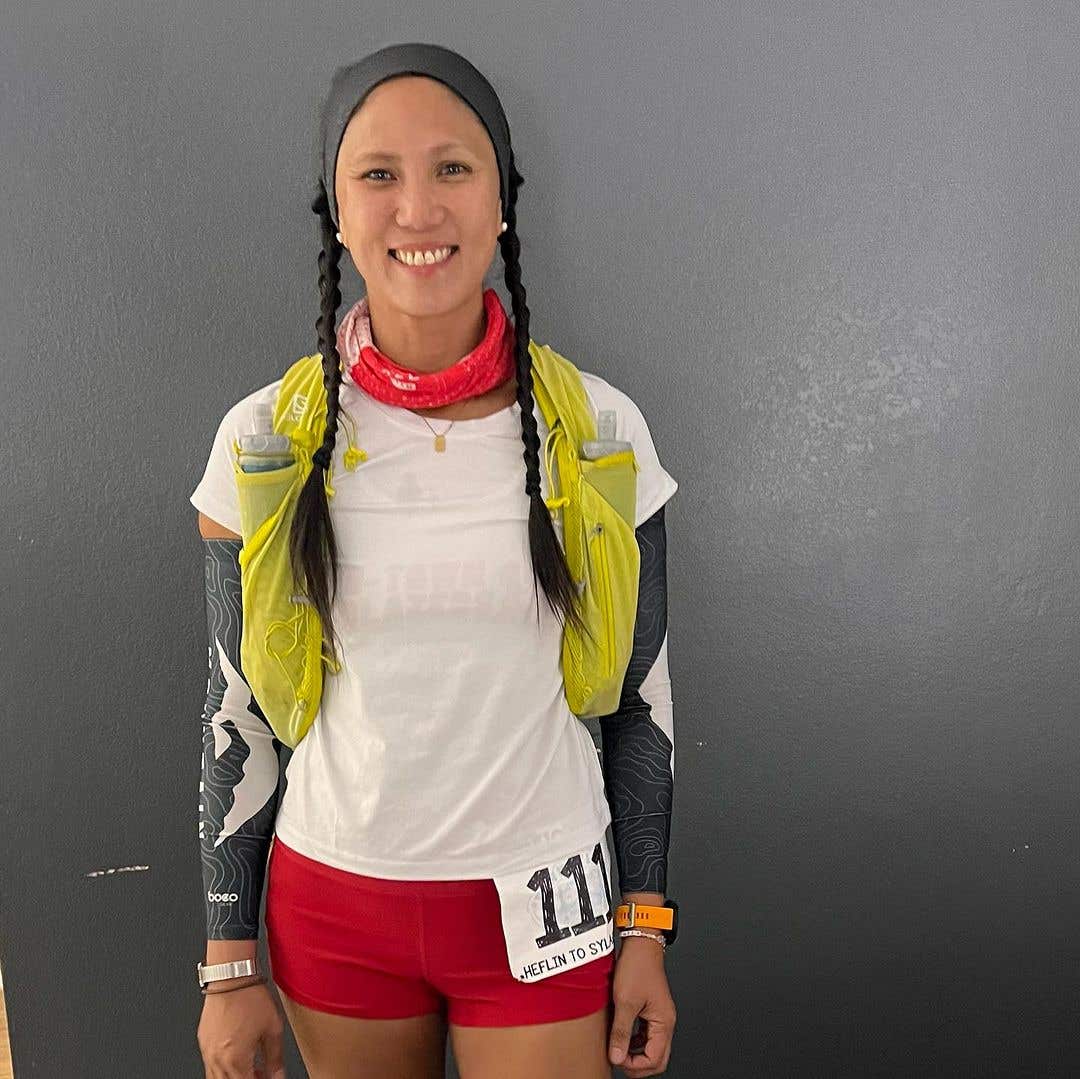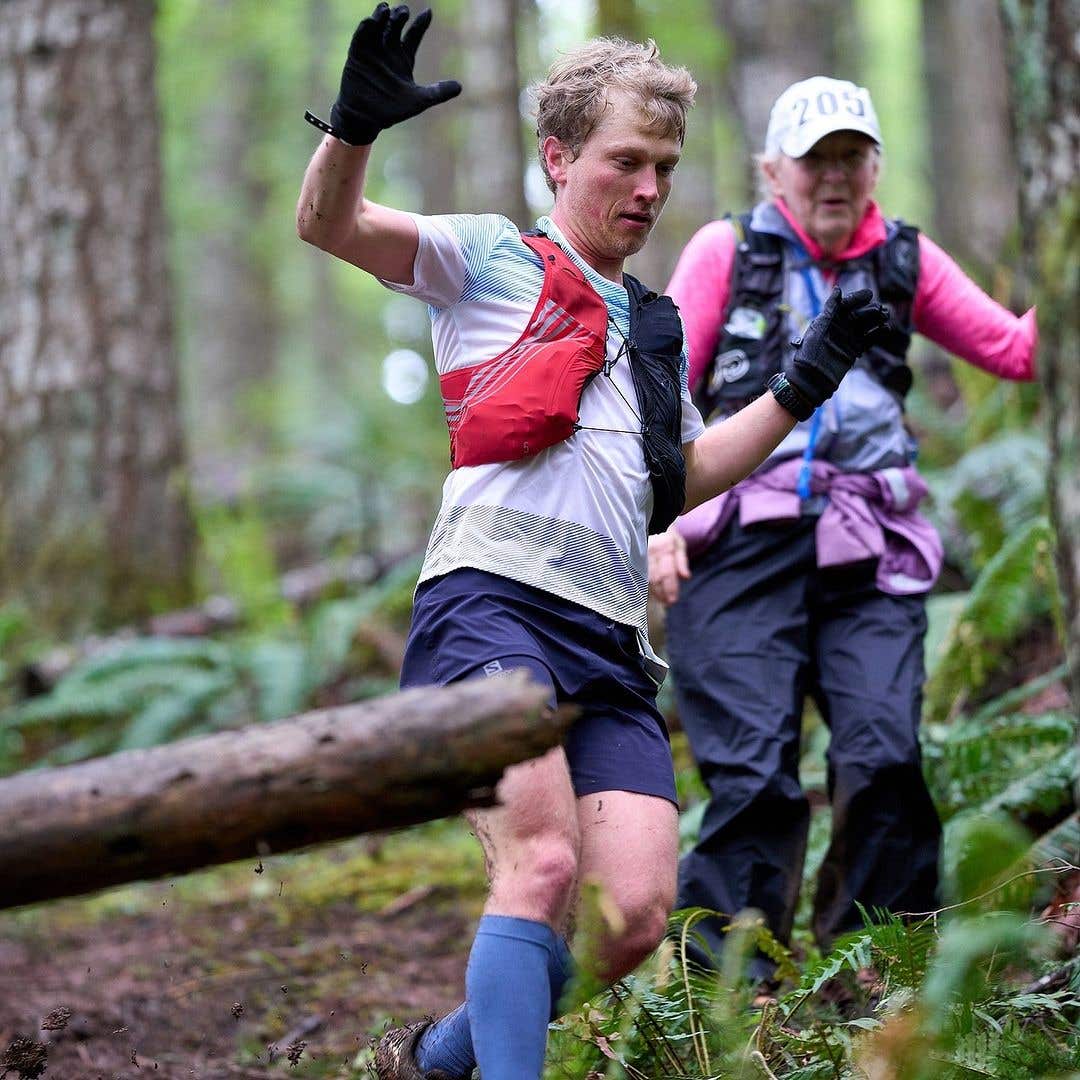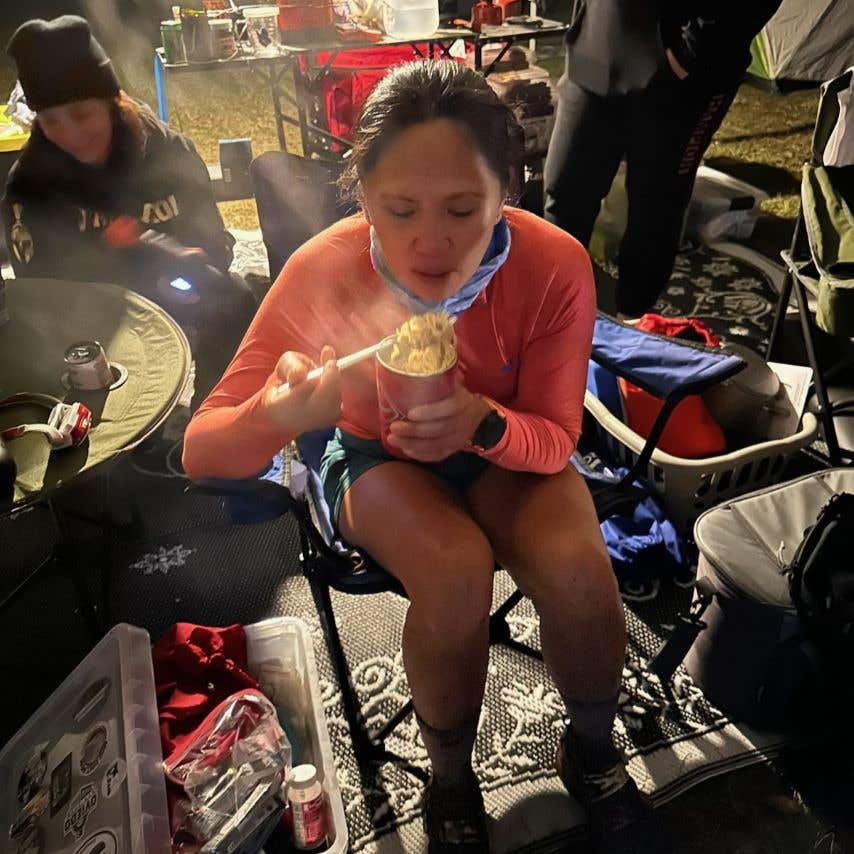Ultramarathons (or ultras) are any race distance longer than the traditional marathon (26.2 mi). These races can often be as far as 250 miles (looking at you, Cocodona 250!) As with any long-distance race, fueling is an important aspect of race strategy that allows runners to endure the physical demands required while on their feet for hours after hours.
Why Is Fueling During Races Important?
Since ultras can last for hours or even days, it’s critical for athletes to maintain energy levels throughout. Proper fueling during a race ensures a steady supply of nutrients to allow runners' bodies to produce energy.
Fueling supports muscle repair and preservation, helping to reduce muscle fatigue during a race, in addition to facilitating a quicker recovery afterwards. Ever heard of ‘hitting the wall’? In endurance races, ‘hitting the wall’ refers to a sudden loss of energy, often caused by inadequate fueling and lack of nutrients. The best fueling strategies for races will help runners avoid the dreaded wall and perform at their best for longer periods of time.
Strategies For Fueling During Ultras
While there’s certainly not a one-size-fits-all approach to fueling, it’s always helpful to look to other athletes for inspiration. So, we asked Team Injinji Athletes Bobby Le, Andrew Miller, and Lovelyn Findley how they like to stay fueled during long races.




Lovelyn Findley (left) and Andrew Miller (right)
What factors – nutritional value, ease of digestion, etc. – do you consider when choosing race snacks?
Bobby: The biggest factor for me is taste. I’m a picky eater, so I have to like what I take in during races. Then I consider if it has the nutrients I need – carbs, protein, etc.
Andrew: I opt for foods that are high in carbohydrates and easy to digest. Easy to digest foods are key for eating while running. Carbohydrates are key because they're what your body is burning and will quickly run out of when running.
Lovelyn: I look for snacks that are high in carbohydrates. Carbs are the primary source of fuel for endurance activities like ultra running, providing both immediate and sustained energy to keep pushing forward mile after mile. Whether it's energy gels, chews, or bars, I make sure they contain a good balance of complex and simple carbohydrates.
Equally important is the ease of digestion. During long races, the last thing I want is to deal with gastrointestinal distress. So, I opt for snacks that are gentle on the stomach, avoiding anything too heavy or fiber-rich that might cause discomfort or slow down digestion.
Texture also plays a role in my snack choices. I prefer options that are easy to consume on the go, without requiring a lot of chewing or effort to swallow. This ensures I can quickly refuel without interrupting my stride or wasting precious time at aid stations.
If you had to pick your top three snacks to eat during ultra races, what would they be and why?
Bobby:
- Oreos – I mean, they're Oreos.
- McDonald’s cheeseburgers (hold the ketchup/hold the pickles) – this may sound weird, but I love a cheeseburger in the middle of an ultra. It tastes great and has the nutrients I need.
- Mt. Dew – it’s not food, but it’s a must-have for me. I don’t drink a lot of soda outside of races, so Mt. Dew in the middle of a race not only gives me a little pep, but tastes oh so good going down.
Andrew:
- I have primarily used energy gels during races. They are easy to eat, and I have completed enough races and training runs with them that I know they will work. I have used some sports drinks as well, but primarily just use energy gels. They have been my go-to nutrition plan for 50K to 100M.
Lovelyn:
- Blueberries: nature's powerhouses are packed with antioxidants and nutrients. Blueberries offer a refreshing sweetness that satisfies my cravings while also delivering a dose of carbohydrates to fuel my muscles. Their small size and ease of digestion make them perfect for munching on the go, providing a natural energy boost without weighing me down.
- Pancakes might seem like an unconventional choice for race fuel but hear me out. Made with wholesome ingredients, pancakes are a great source of complex carbohydrates and protein. They provide sustained energy release, keeping me fueled for the long haul. They’re incredibly versatile. I can top them with peanut butter or maple syrup for added flavor and nutrients, and their soft texture makes them easy to eat while running.
- Potato chips might not be the healthiest option, but they are a secret weapon for ultra runners. Potato chips provide a quick dose of sodium and carbohydrates. Their crunchy texture and bold flavor provide a welcome distraction during long miles, making them a satisfying and indulgent treat on the trail.




Bobby Le (left) and Lovelyn Findley (right)
Have you experimented with different fueling sources during races? If so, what worked for you, and what didn’t?
Bobby: During one of my 100-milers, I was experiencing full-body cramps like I have never experienced in a race before. When I got to the aid station, I was desperate and drank some pickle juice for the first time. It didn’t sit well with me and came back up a mile later. However, I felt like a new person shortly after and was able to finish my race. I will now hit some pickle juice (as much as I hate it) when I need that “puke and rally” moment.
Andrew: I have not experimented much in races because I have a plan that works. This summer, I plan to run the Bigfoot 200 miler, so I am trying some new things. I have been eating more solid food on training runs because I will be running at a lower effort during the 200 miler and will be able to eat more. Plus, I get tired of energy gels after a few hours, so I think I will need something else to get through a few days!
Lovelyn: In my last 100-mile race, I decided to forgo liquid calories like Tailwind to see how my body would respond. My stomach struggled to tolerate it in the later stages of the race. So, I eliminated it entirely and relied solely on water for hydration with no added mixes. However, this approach didn't pan out well because I did not consume enough calories overall. Towards the end, I started feeling nauseous and lacking in energy.
In another race, I tried using rice as my primary fuel source. I prepared it in a soupy consistency and packed it into a convenient pouch for easy consumption on the go. Surprisingly, this strategy worked wonders for me. The rice provided sustained energy, and I never experienced the dreaded bonk. Plus, the soup-like texture made it effortless to swallow while walking or running. Another bonus was that it was more cost-effective than relying solely on energy gels.
What advice do you have for runners new to the sport who are unsure where to start with fueling?
Bobby: There are a lot of options out there. You don’t have to fuel with just GU and gels. Start with foods you know will sit well in your stomach. Try them out on shorter runs and see how you feel. If they work well during short runs, start introducing them into your long runs. You have to train your gut as much as you train your legs.
Andrew: I recommend eating 200 calories per hour on your long run and races. You may need to eat more depending on how fast you are going and how much energy you are expending. Aim for simple carbohydrates because they're the easiest for your body to burn and are quickly depleted. Energy gels and sports drinks are a great place to start, but don’t be afraid to experiment if those aren’t working for you. Pay attention to what works so you don’t have to learn the same lesson twice.
Lovelyn: My advice is simple: practice, practice, practice. During your training runs, eat the same foods you plan to use as fuel during your races. This allows you to test the nutritional value of the foods and get accustomed to their texture and consistency. Determine what works best for your body and what doesn't. Pay attention to how different foods sit in your stomach, how they affect your energy levels, and whether they're convenient to eat while on the run. I learned firsthand to consider the practicality of race snacks – trying to swallow strips of dry chicken breast while fatigued and trying to control your breathing is not ideal! Finding the right fueling strategy is a personal journey, but with consistent practice and experimentation, you'll discover what fuels you best for success on race day.
What’s your favorite Injinji sock to wear when you race?
Bobby: The Ultra Run Mini-Crew socks have become my go-to for ultra marathons. The extra little cushion just feels great on my feet.
Andrew: I have worn the Run Lightweight Mini-Crew sock at almost every race I have run. I wear it on all my training runs too. I like the lightweight fabric and the individual toes have kept my feet blister-free for over a decade.
Lovelyn: The Trail Midweight Crew socks have been my trusted companion through some seriously muddy races, including my last 100 miler. I wore the same pair throughout the entire race without changing them once. I didn't experience any hot spots or develop blisters – my feet felt comfortable and supported the whole time.
With such a positive experience, I firmly believe in the "if it ain't broke, don't fix it" mentality. So, I stuck with my trusted pair of Injinji socks for the entire 29 hours of that race. My strategy for long races is simple: a layer of Vaseline to prevent chafing and friction, combined with a single pair of Injinji socks. This combo has never let me down, allowing me to focus on the miles ahead without worrying about my feet.








